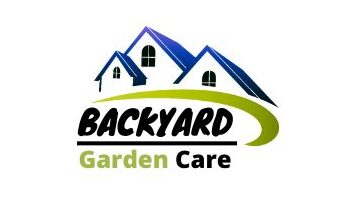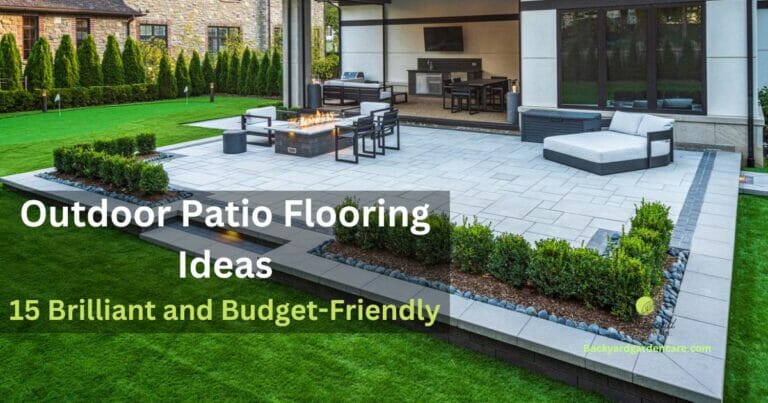Cheap Way to Cover Dirt in Backyard, 6 Factors You Need to Know About When Covering Dirt.
Maintaining a beautiful and functional backyard is a crucial aspect of homeownership. However, the process can be quite costly, especially when dealing with unsightly dirt patches.
Fortunately, there are several cost-effective and straightforward ways to cover dirt in your backyard while still creating an attractive and pleasing space. If you’re looking for affordable ways to improve the appearance of your backyard, you’ve come to the right place.
In this article, we’ll dive into all you need to know about cheap methods to cover dirt in your backyard – from materials to costs and maintenance requirements. With these tips, you can transform your backyard into a stunning. Keep reading to discover how to cover dirt in backyard for a party.
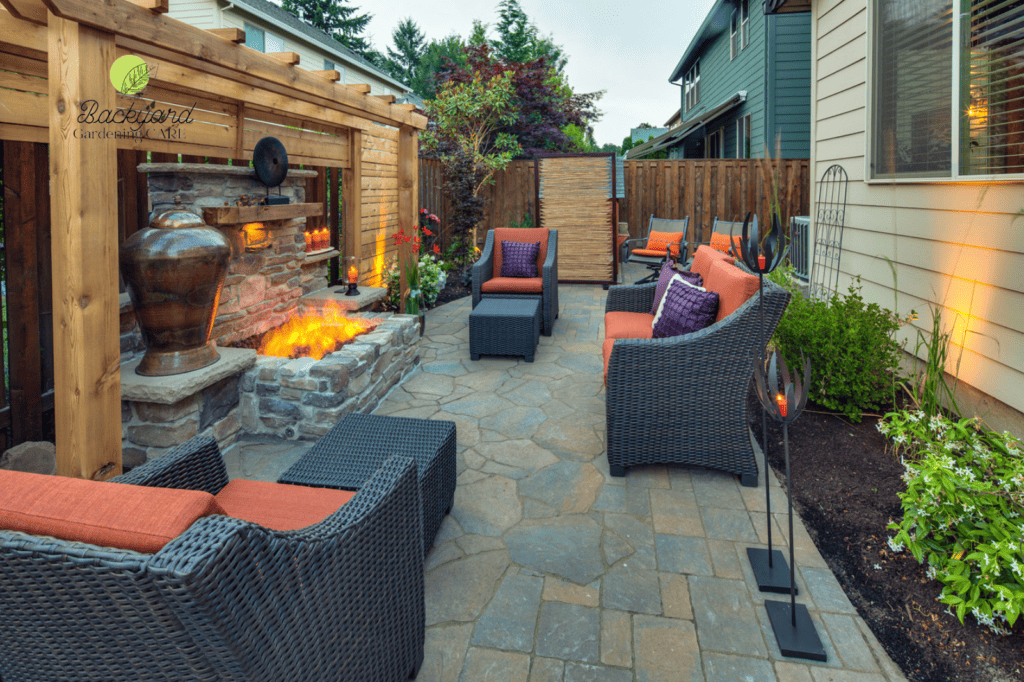
Now let’s get started discussing related to cheap way to cover dirt in backyard.
Why Cover Dirt in the Backyard?
There are many benefits to having a backyard in a home in which we can relax, entertain guests, and enjoy the outdoors, and it is one of the most important parts of any home. However, one common problem that homeowners face is the presence of dirt and bare patches in their muddy backyards, lawns and gardens.
This can be unsightly and make it difficult to maintain a healthy lawn and garden. That’s why it’s important to cover dirt in your backyard. Here are a few reasons why.
1. Aesthetics: One of the most obvious reasons to cover dirt in your backyard is aesthetics. Dirt and bare patches can make your backyard look messy and unkempt. You can create a more polished and attractive look by covering the dirt with mulch, stones, or grass seed.
2. Erosion Control: Another important reason to cover dirt in your backyard is to prevent erosion. When exposed, dirt is more susceptible to erosion from wind and rain.
This can lead to soil loss and make maintaining a healthy lawn and garden difficult. If you live in an area with heavy rainfall or flooding, bare soil can easily wash away and cause damage to your property and surrounding areas.
Covering dirt with mulch, gravel, or other materials can help prevent erosion and protect your property. Covering the dirt with a protective layer of mulch or stones can help prevent erosion and keep your soil in place.
3. Weed Control: Covering dirt in your backyard can also help control weeds. Weeds thrive in bare soil; if left unchecked, they can quickly take over your yard. Covering the soil with a layer of mulch or stones and valuable Rocks for landscaping can create a barrier that makes it difficult for weeds to grow.
4. Functional Benefits: Covering dirt in the backyard can also make your outdoor space more functional. For example, if you’re looking to create a garden or grow plants, adding a layer of nutrient-rich soil can help improve your soil quality and yield better results.
Additionally, if you have an outdoor workspace or area for entertaining, covering dirt with pavers or concrete can create a more stable, level surface for furniture and equipment.
Covering dirt in your backyard is important in maintaining a healthy and attractive outdoor space. The benefits are clear whether you cover the dirt with mulch, stones, or grass seed.

It is Important to Consider These Factors When Covering Dirt.
When it comes to covering dirt in your yard, there are several things to consider to choosing the right material. Whether trying to beautify your outdoor space or prevent weeds from growing, the material you choose will greatly impact your yard’s overall look and feel. Here are a few things to keep in mind when deciding on the best material for your yard.
1. Purpose – Before choosing a material, it’s important to determine the purpose of covering the dirt. If you are trying to reduce erosion or improve the appearance of your backyard, are you trying to prevent weed growth, reduce weed sprouts, or both? Different materials serve different purposes, so identifying your needs will help narrow your options.
2. Climate – The climate in your area will also play a role in your choice of material. If you live in a dry area, you may want to opt for a material that retains moisture to promote plant growth. Choosing a material that won’t get washed away easily is important in areas with heavy rainfall.
3. Cost – The cost of the material is another important factor to consider. Some materials, such as grass seed or mulch, can be inexpensive, whereas others, such as stone or gravel, can be expensive. Choosing a material that fits your budget and can provide the results you are looking for is important.
4. Maintenance – Different materials require different levels of maintenance. For example, some types of mulch may need to be replaced more frequently than others, while gravel may require occasional raking or leveling. Consider the time and effort you’re willing to put into maintaining your yard when choosing a material.
5. Durability: Durability is another important factor when choosing a material. The material you choose should be able to withstand the elements and last for a long time. Some materials, like mulch, break down over time and will need to be replaced periodically. Others, like gravel, are more durable and can last several years.
6. Aesthetics – Consider the look you’re trying to achieve. Some materials, like grass or mulch, have a natural, organic look that can blend seamlessly into your yard. Other materials, like gravel or flagstone, have a more modern, industrial look that can add a unique visual element to your space. Choose a material that complements your style and the overall aesthetic of your home.
Considering these factors, you can choose the right material to cover your yard’s dirt. Various options are available, from mulch and gravel to grass seed and straw, to suit your needs and preferences. With a little research and planning, you can create a beautiful and functional outdoor space you’ll love spending time in.
Popular Solutions for Covering Dirt in the Backyard
As a homeowner, you want your backyard to be a place of relaxation and enjoyment, where you can gather with friends and family or unwind after a long day. But creating that inviting atmosphere, you desire can be hard if your backyard is covered in dirt.
Luckily, there are several popular solutions for covering dirt in the backyard that can transform your outdoor space into a beautiful and functional area. And discuss What is the cheapest way to cover a backyard.
1. Mulch
One of the most crucial aspects of backyard maintenance is to cover up the soil to prevent weed growth and improve soil quality. While various options are available, organic mulch is an affordable and natural way to cover up your backyard soil. In this section, we will explore the benefits of organic mulch and the materials that can be used to create it. Black mulch is also a popular material used in landscaping for various reasons, including preventing weed growth and preserving moisture and a natural cheap way to cover up your backyard soil.
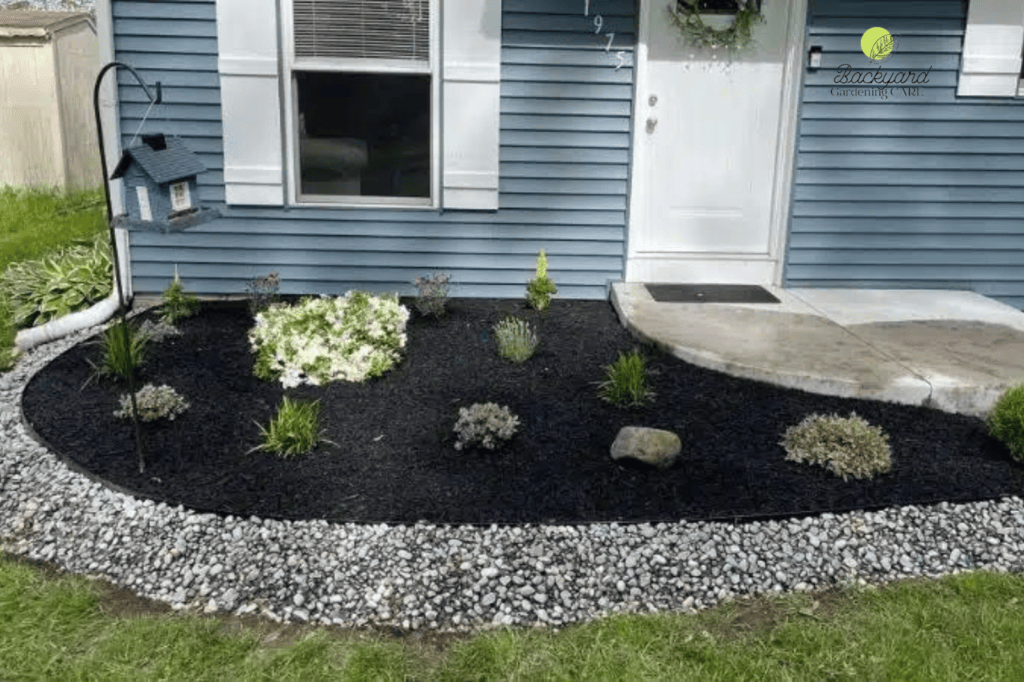
What is Organic Mulch?
Mulch is a popular option for covering dirt in the backyard because it’s affordable, easy to install, and can add a nice decorative touch to your landscaping. There are many different colours and textures of mulch on the market, so you can choose the one that best matches your yard’s style and preferences.
Organic mulch is a natural material used to cover the soil in your backyard. It comprises various biodegradable materials such as wood chips, hay, straw, shredded leaves, and pine needles. Organic mulch can be used in residential and commercial settings to improve soil quality, reduce weed growth, and conserve water.
Benefits of Organic Mulch
Organic mulch has several benefits that make it an excellent choice for covering up the soil in your backyard. Here are some of the advantages of using organic mulch:

- Prevents Weeds from Developing Further: One of the primary benefits of organic mulch is that it helps prevent weed growth in your backyard. The mulch is a barrier between the soil and the sunlight, preventing weed seeds from germinating.
- Improvement in the Quality of Soil: Organic mulch helps improve soil quality by adding nutrients. As it decomposes, Mulch releases essential nutrients into the soil, like nitrogen, phosphorus, and potassium, which help the soil become more nutrient-rich. This, in turn, helps improve soil fertility and promotes plant growth.
- Reduces Water Requirements: Organic mulch helps retain moisture in the soil, reducing the need for frequent watering. As the organic mulch absorbs water and dries up a wet yard, it slowly releases it back into the soil, keeping it moist and nourished.
- Increase in Pest Resistance: Organic mulch helps create a healthy and diverse ecosystem in your backyard that attracts beneficial insects.
- Protects Roots from Extreme Temperatures: Organic mulch acts as an insulator, protecting the roots of your plants from extreme temperatures. In the summer, it helps keep the soil cool, while in the winter, it helps keep the soil warm.
In short, Organic mulch is an affordable and natural way to cover up the soil in your backyard. It helps prevent weed growth and improves soil quality. Using organic mulch, you can create a healthy and beautiful backyard that you can enjoy for years.
2. Artificial Turf

If you are tired of dealing with a muddy, patchy, or dry lawn, artificial turf might be the solution you have been looking for. Artificial turf has become increasingly popular over the years due to its ease of use, low maintenance, and realistic look and feel.
In this part, we’ll explore everything you need about artificial turf and how it can transform your outdoor space.
What is Artificial Turf?
An artificial turf surface is made from artificial fibres that mimic the look and feel of grass, except that it is made from synthetic fibres. Unlike natural grass, artificial turf requires no watering, mowing, or fertilizing, making it a low-maintenance alternative to traditional lawns.
Artificial turf comes in various colours and textures, allowing you to choose the one that best complements your landscape design.
The Benefits of Artificial Turf
There are several reasons why artificial turf has gained popularity over the years. Here are some key advantages of artificial turf:
- Low Maintenance: Artificial turf requires minimal maintenance, saving you time and money on lawn care. You don’t have to water, mow, or fertilize artificial turf, making it an ideal option for those who lead busy lives or have limited mobility.
- Durable: Artificial turf is built to withstand heavy foot traffic, making it an ideal choice for families with children or pets. It is also resistant to weather damage, making it an ideal option for areas with extreme weather conditions.
- Eco-Friendly: Artificial turf does not require pesticides or fertilizers, making it a better environmental option. It also helps conserve water, reducing your overall water usage.
- Versatile: There are several scenarios in which artificial turf can be used, including residential lawns, commercial landscaping, and sports fields, among others. It comes in various colours and textures, allowing you to customize it to your preferences.
Factors to Consider When Choosing Artificial Turf
There are several factors to consider before selecting artificial turf for your outdoor space. Here are several important points to consider.
- Quality: Not all artificial turf is created equal. High-quality artificial turf is usually more expensive but lasts longer and looks more realistic.
- Density: The number of fibres in each square inch of the surface determines artificial turf density. The higher the density, the more fibres there are and the more durable and realistic the turf will look and feel.
- Colour: Artificial turf comes in a range of colours, from bright green to muted shades of brown. Choose a colour that complements your landscape design and blends well with the surroundings.
- Texture: The texture of artificial turf refers to how the fibres feel underfoot. Some artificial turf feels soft and plush, while others are more rigid.
- Installation: A professional should install artificial turf to ensure it is installed correctly and looks its best. The installation process can take several days, depending on the size of the lawn.

In short, Artificial turf is an excellent alternative to natural grass for those who want a low-maintenance lawn that looks and feels like the real thing. With its durability, versatility, and eco-friendliness, it is no wonder that more and more people are turning to artificial turf for their outdoor spaces.
3. Brick Pavers
There are several choices available to you when it comes to adding a touch of elegance to your outdoor space, and paver bricks are one of the best. I’ve personally experienced the transformation that brick pavers can bring to a backyard filled with dirt.
When my backyard was a muddy mess, I decided to invest in brick pavers to create a beautiful and functional outdoor space. It turned out to be a fantastic decision. Not only did the brick pavers instantly elevate the aesthetics of my yard, but they also provided a clean and stable surface for various outdoor activities.
Whether it’s hosting gatherings, setting up outdoor furniture, or simply enjoying a peaceful afternoon, the brick pavers made my backyard a more inviting and enjoyable space. If you’re looking to upgrade your dirt-filled backyard, consider brick pavers as a practical and visually appealing solution.

Versatility in Size, Shape, and Color
The biggest advantage of paver bricks is that they come in a wide range of shapes, sizes, and colours, offering you a vast choice of sizes, shapes, and colours. You can choose the ones that suit your style and preference.
Paver bricks are available in various shades, from earth tones to more vibrant hues, that match your house’s decor or create a relaxing ambience. You can create patterns using different colours and shapes for a unique look.
Low Cost
Paver bricks are a cost-effective way to cover dirt in your backyard. If you have recently built your home, you may have leftover bricks that you can use for your landscaping project.
Buying second-hand or used bricks is also an option, which can help you save even more money. Other landscaping materials, such as natural stone, are more expensive than paver bricks.
Ease of Installation
Paver bricks are relatively easy to install, and you can do it yourself with some workforce. After measuring the area, you want to cover, you will need to prepare the surface by removing any grass, debris, or roots.
Next, you will need to level the ground and add a layer of sand before installing the bricks. You can create a solid foundation by compacting the sand and properly levelling each brick. Once you have completed the installation, you can fill in the gaps between the bricks with sand.

Durability
The durability of paver bricks makes them suitable for harsh weather conditions. They are resistant to cracking, chipping, and fading, making them ideal for outdoor use.
Their interlocking design allows them to flex and move, preventing them from cracking under pressure. Paver bricks can last for many years without needing any significant maintenance.
In short, Paver bricks are an excellent choice for homeowners looking to enhance their outdoor space without spending a fortune.
4. Gravel
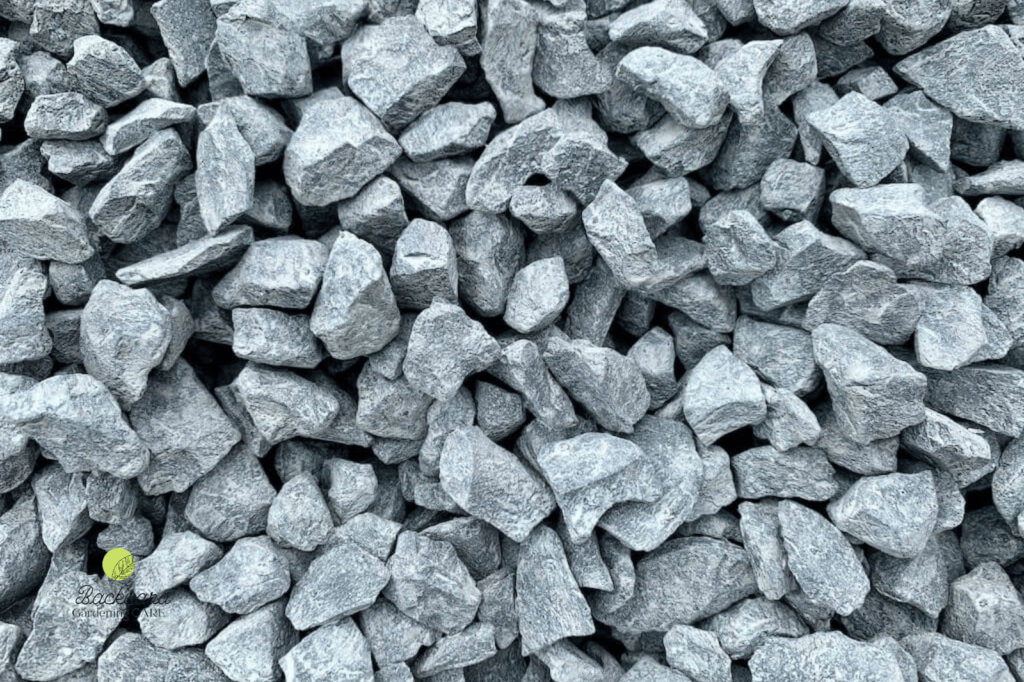
Gravel is an excellent option for covering dirt in your backyard since it is very durable, easy to install, and affordable compared to other materials. Here are we; we’ll dive into the benefits and drawbacks of using gravel in your backyard and provide tips for installation and maintenance.
Benefits of Gravel
- Durability: Gravel is a long-lasting option for covering dirt in your backyard. Once it’s laid down, you won’t have to worry about it breaking down or needing to be replaced anytime soon.
- Easy Installation: Installing gravel is relatively simple. All you need to do is clear the area of any debris, level the ground, and lay down the gravel. It’s a great DIY project that won’t take up too much of your time.
- Affordable: Gravel is one of the most cost-effective options for covering dirt in your backyard. It’s much cheaper than other landscaping options like sod or paving stones.
- Low Maintenance: Once the gravel is in place, you won’t have to worry about watering, mowing, or fertilizing. This makes it an ideal option for those who want a low-maintenance backyard.

Drawback of Gravel
- Heat Attraction: One of the biggest drawbacks of using gravel in your backyard is that it can attract heat. If your yard is in a hot area, there may be better options than gravel, as walking on with bare feet can become uncomfortable.
In short, Gravel is an excellent option for covering dirt in your backyard. It’s durable, easy to install, and affordable.
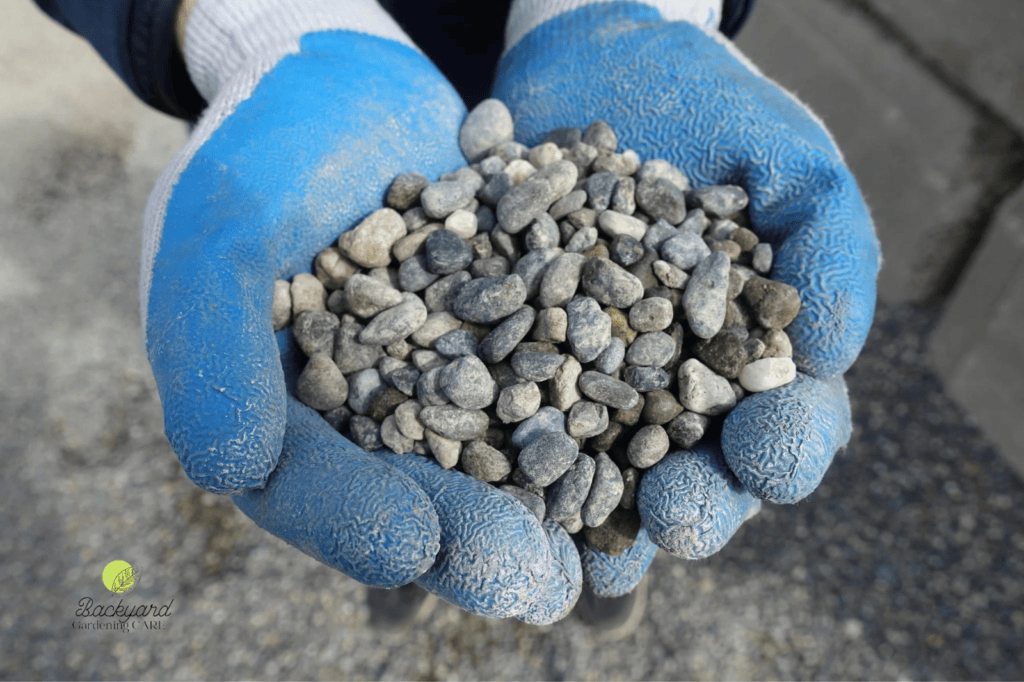
5. Natural Grass
Natural grass is a great option for homeowners who want to improve the quality of their landscape. It may require some knowledge and care, but the benefits far outweigh the effort involved. This section looks into the many benefits of planting and maintaining natural grass.
Planting Natural Grass
Before you begin planting natural grass, you must consider the climate, soil type, and grass species best suited for your area. Some of the most common grass species include Bermuda, St. Augustine, Zoysia, and Kentucky Bluegrass. Each species has unique characteristics, such as drought resistance, shade tolerance, and growth rate.
Produces Oxygen
A very important benefit of natural grass is that it can produce a large amount of oxygen, which is necessary for the survival of living organisms. By planting natural grass, you improve your home’s air quality and contribute to the environment’s health.
Maintains Hygiene
Furthermore, with the ability to filter dust from the air and purify water, natural grass can also produce oxygen and maintain the cleanliness of the surrounding area. This can be especially helpful for those who live in areas with high pollution levels. The grass acts as a natural filter, improving the air quality and making it safer to breathe.
Stress Reduction
There is no doubt that walking barefoot on natural grass can be a therapeutic way to reduce stress, whether you believe it or not. The soft texture of the grass underfoot can help soothe and relax the mind. If you’re feeling stressed or anxious, try taking a walk on the grass and see how it makes you feel.
Eye-Pleasing
Natural grass is also aesthetically pleasing and can add beauty to any landscape. It is a great way to improve the overall look of your property and increase your home’s curb appeal. Plus, it can also increase the value of your property if you decide to sell it in the future.
Maintaining Natural Grass.
Maintaining natural grass requires regular care and attention. The most important factors to consider are watering, fertilizing, mowing, and pest control.
Watering: Natural grass requires regular watering to stay healthy and green. The water needed depends on the grass species, soil type, and climate. Generally, it is recommended to water the grass deeply and infrequently, as this promotes deep-root growth and improves drought tolerance. You can use a sprinkler system or hose to water the grass, but make sure to avoid overwatering, as this can cause fungal diseases and root rot.
Fertilizing: Fertilizing is essential to provide the grass with the necessary nutrients for growth and health. You can use organic or synthetic fertilizers, depending on your preference.
It is recommended to fertilize the grass at least once a year, preferably in the spring or fall. Ensure to follow the fertilizer package instructions regarding application rate and timing.
Mowing: Regular grass helps maintain a neat and uniform appearance. The frequency of mowing lawns depends on the temperature, grass species and growth rate.
Generally, it is recommended to mow the grass when it reaches around 3 inches in height. Make sure to use a sharp mower blade and avoid cutting the grass too short, as this can stress the grass and cause damage.
Pest Control: Natural grass is susceptible to pests such as insects and rodents, which can cause damage to the grass and soil. Depending on your preference, you can use natural or chemical pesticides to prevent pest infestations.
Inspecting the grass regularly for signs of pest damage and taking appropriate action if necessary is recommended.
Overall, planting and maintaining natural grass can have a wide range of benefits for both your family and the environment. It produces oxygen, maintains hygiene, reduces stress, and is aesthetically pleasing.
Conclusion
there are several inexpensive and creative ways to cover dirt in your backyard. Whether you choose to use grass seed, mulch, or gravel, you can transform your outdoor space into a beautiful and functional area without breaking the bank.
With a little bit of effort and creativity, you can create a backyard oasis that you and your family can enjoy for years to come. So, don’t let a bare patch of dirt hold you back from enjoying your outdoor space. Try one of these cheap and easy solutions and start enjoying your backyard today.
FAQs
How Do You Cover a Sandy Backyard?
One option is to build raised garden beds or pots and fill them with soil to create a defined gardening area. Additionally, adding plants well-suited to sandy soil, such as succulents or beach grasses, can help stabilize the area and add visual interest.
What Can I Do with My Backyard Full of Sand?
The possibilities are endless, and with a little creativity, your backyard full of sand can be transformed into a unique and enjoyable space. You can plant drought-resistant plants that can grow in sandy soil. Another option is to create a sandpit area for kids or even build a volleyball court for outdoor sports fun.
What is the Cheapest Way to Cover Dirt in Backyard?
There are a few affordable options to cover dirt in your backyard. One option is mulch, made of shredded wood and can be purchased in bulk for a reasonable price. Another option is gravel, which can also be purchased in bulk and spread over the dirt.
Additionally, consider planting ground cover plants which can help prevent soil loss and add some greenery to your backyard. Ultimately, the cheapest option will depend on the size of your backyard and your personal preferences.
Cheap Way to Cover Dirt in Backyard with Dogs
One cheap and effective way to cover dirt in your backyard with dogs is to use mulch. Mulch not only covers the dirt but also helps to control weeds and retain moisture in the soil. It is also safe for dogs to walk and play on. Just make sure to avoid using any toxic materials that may harm your furry friends.
What to Do with a Dirt Backyard Rental
One possible solution for dealing with a dirt backyard in a rental property is adding artificial turf or creating a low-maintenance landscape with drought-tolerant plants.
Another option could be to explore temporary solutions such as using outdoor rugs or portable decking to create a more functional outdoor space. Ultimately, the best approach will depend on the specific needs and preferences of the tenant and landlord.
Albert Phipps

Hello, I’m Albert Phipps, your trusted professional gardener. I have a deep passion for nurturing nature’s beauty, With years of experience in landscaping. I’m dedicated to creating lush, vibrant gardens and outdoor spaces.
If you’re seeking guidance on plant selection, grass care, pest control products, garden design, or lawn maintenance tips, don’t hesitate to get in touch. I’m here to help you transform your outdoor space into a thriving and serene landscape.
